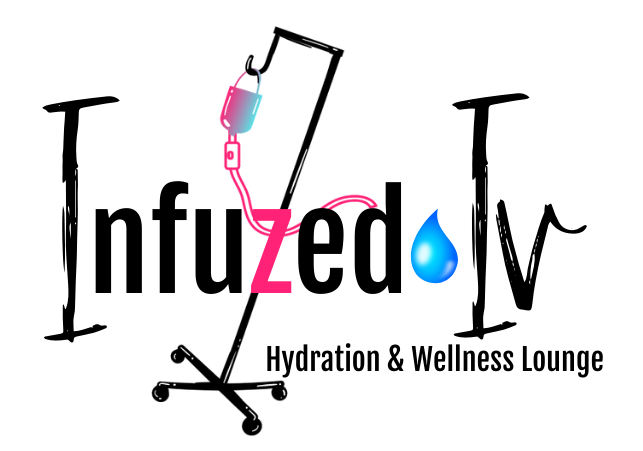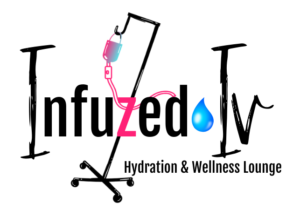When it comes to weight loss, many people struggle with maintaining the necessary healthy lifestyle in order to lose fat. Others manage to lose weight but struggle with stubborn areas of fat that remain no matter how much they diet and exercise. In these cases, many patients turn to weight loss pills or surgery in order to achieve the desired loss of fat. Unfortunately, these methods come with health risks and side effects. Red Light Therapy, also known as photobiomodulation, provides a safe, non-invasive alternative to address unwanted fat.
What is Red Light Therapy?
Red light therapy uses a low-powered red light to deliver wavelengths directly through the skin. The light is then absorbed by the cells, where it gives the mitochondria a boost and triggers the increased production of adenosine triphosphate (ATP). This increase in ATP creates higher functioning cells that stimulate the body’s natural processes, resulting in benefits such as decreased inflammation, increases in blood flow, increases in collagen production, reduced effects of oxidative stress, and an increased ability to repair and restore damaged cells and tissue.
Numerous studies have examined the benefits of red light therapy in a variety of different applications. For example, a 2018 randomized, triple-blind, placebo-controlled clinical trial published in Lasers in Medical Science looked at the use of red light therapy to treat acute pain and inflammation in patients that underwent total hip arthroplasty. When compared to placebo patients, those receiving red light therapy showed decreased levels of inflammatory cytokines and decreased pain intensity.
How Does Red Light Therapy Treat Fat Cells?
We know that red light therapy offers a wide variety of different health benefits, from reducing inflammation and the effects of oxidative stress to boosting the body’s natural healing ability. But what does red light therapy do to fat cells to promote fat reduction?
In addition to boosting your cells with increased ATP production, red light therapy also affects adipocytes, or the cells that store fat. Studies, such as the 2011 study published in Obesity Surgery, show that exposure to red light therapy causes the adipocytes to release triglycerides, resulting in reduced volume and a measurable loss of fat. Participants in this 4-week study experienced a 2.15 cm loss in waist girth.
But the loss of triglycerides is not the only benefit red light therapy provides to patients trying to lose weight and improve body contour.
Studies Show Additional Weight Loss Benefits with Red Light Therapy
Not only can red light therapy help reduce the size of fat cells, thus helping to shape the body contour, but it also provides additional benefits for patients working to lose weight.
A 2012 study published in the International Journal of Endocrinology looked at the effects of light on leptin and ghrelin. Leptin is a hormone responsible for controlling appetite, helping to maintain body weight, and regulating how much energy the body burns. In contrast, ghrelin increases appetite and stimulates the release of growth hormone. In this study, researches looked at participants with poor sleep habits. Reduced sleep levels often increase the production on ghrelin while reducing the levels of leptin, often resulting in weight gain. Their research showed that exposure to red light significantly increased leptin levels while decreasing ghrelin. This reduction in hunger levels can have a great impact on those trying to follow a low-calorie diet for weight loss, helping to reduce hunger and the desire for snacking.
Another study looked at how red light therapy can provide additional benefits during regular exercise routines. The study, published in Lasers in Surgery and Medicine, looked at the effects of light therapy on metabolic inflexibility when used with physical training. During the study, 64 obese women were divided into two groups. The control group participated in exercise training while receiving a placebo light treatment. The second group participated in exercise training and received red light therapy immediately after exercise. Both groups participated in three weekly sessions for 20 weeks. At the end of the study, researchers observed a greater reduction in fat mass and an increase in total skeletal muscles mass and adiponectin concentration compared to the control group.
While clinical research has shown how valuable red light therapy is for a variety of medical conditions, it is also highly beneficial for patients looking to lose weight, reduce fat, and imbody contour. Red light therapy is a safe, non-invasive treatment option that provides effective results, helping patients achieve their weight loss goals.
While LED phototherapy may be useful in supporting weight loss efforts, it should be highlighted that the treatment works best in combination with other therapies for this purpose.
The explanation lies in the mechanism of action.
It has been shown that the action of releasing the contents of adipose (fat) cells is based on preparing the body on wake up, to be able to quickly access the contents for the respiratory process within the cells of being able to produce the ATP required to give the energy for the muscles and other body parts and cells to do what they need to do in an active day.
The release of the contents of these fat cells will be similar across all parts of the body, however there are a couple of things to note. Firstly, the contents after being released need to be consumed, so it is recommended that following this sort of treatment the user engages in some form of physical activity. The improvement in the lymphatics assists with reducing the appearance of cellulite. Secondly, since red light therapy does not destroy the fat cell, the body will refill these cells in balance with the rest of the body.
Therefore, LED phototherapy cannot be used for spot reduction. In order to achieve spot reduction, we require destruction of the fat cell itself. This can be done via heat/cold, cavitation, liposuction etc. However, when used in conjunction with healthy diet and exercise, phototherapy will assist with the overall reduction of fat.
In summary, phototherapy cannot be used for targeted fat cell destruction, however it can assist in overall reduction of fat through increased ATP production, cellular respiration and lymphatic drainage. Furthermore, the process of phototherapy helps with stimulating collagen and elastin, improving the underlying structures and overall appearance of the skin.





